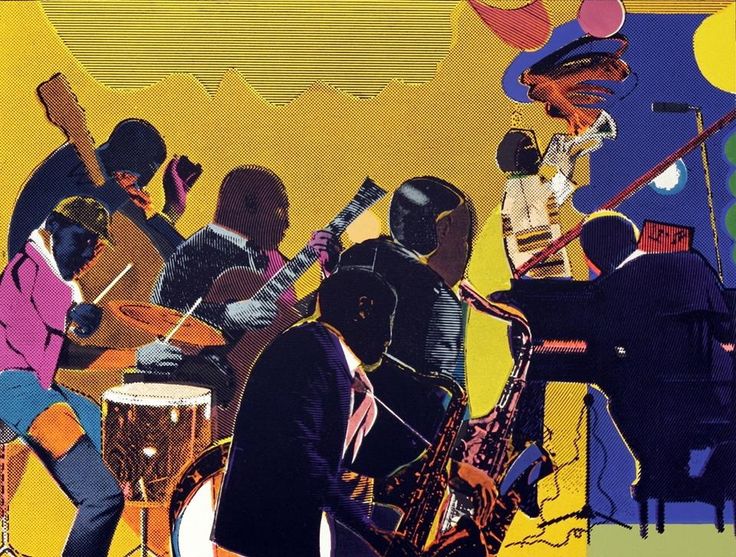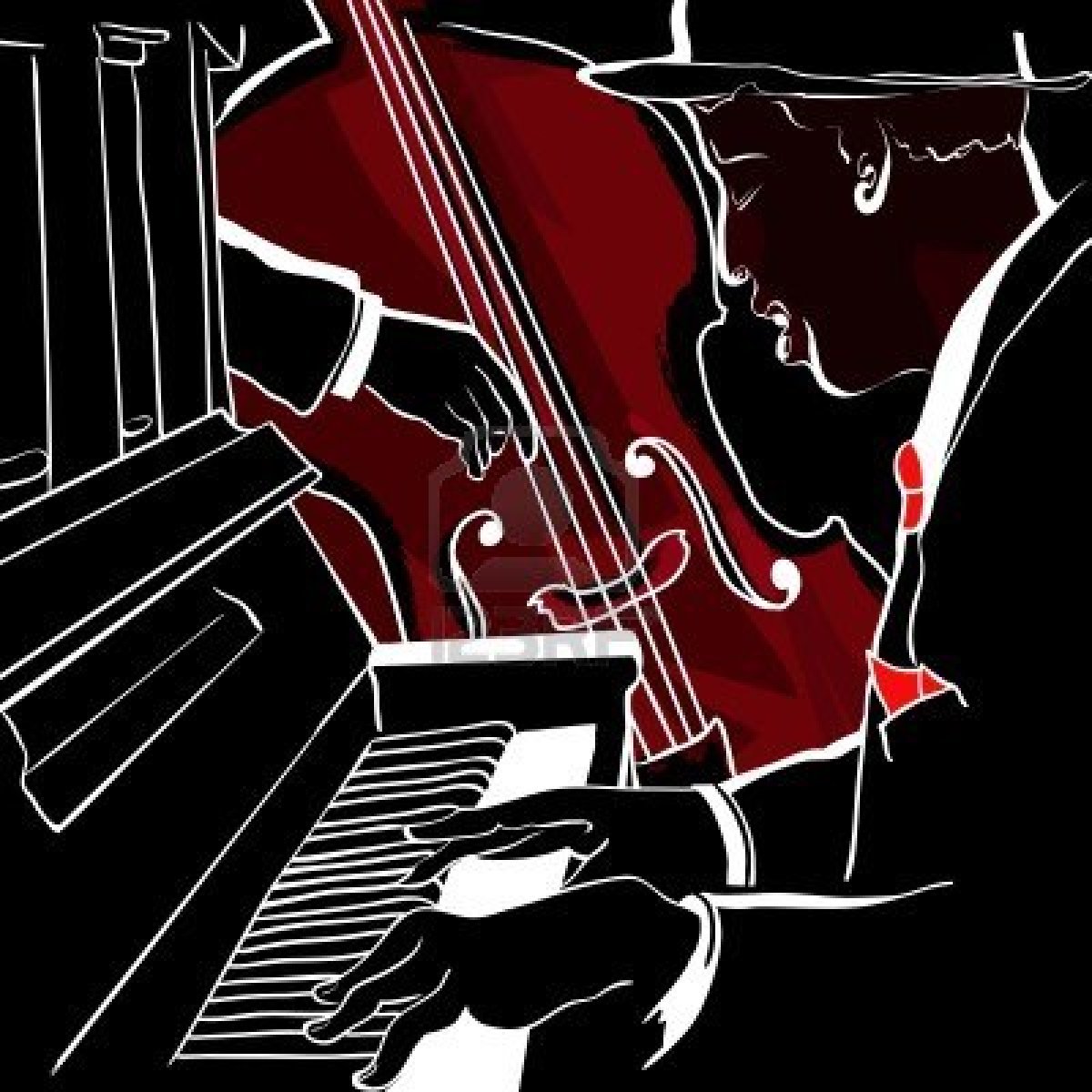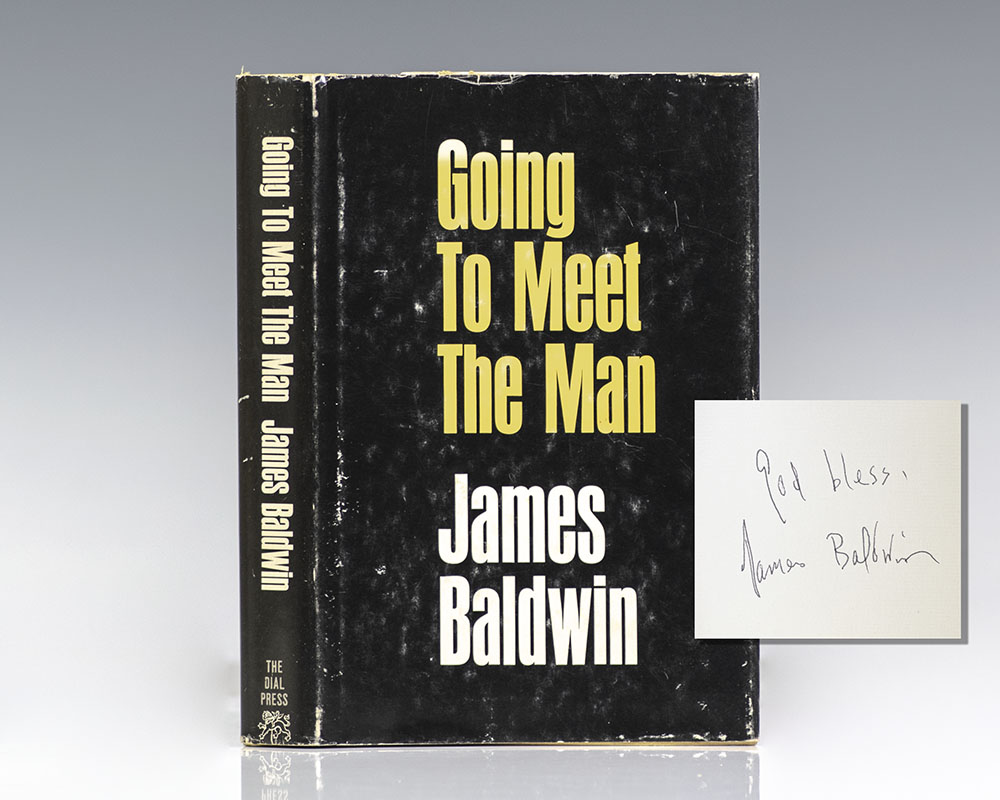Baldwin's Blues Chronicles
All About "Sonny's Blues"
By: Chloe Walsh
Informative Essay on The Toll of Heroin Addiction in Harlem
In the post-World War II era, Harlem faced new challenges as drug abuse started to emerge which significantly impacted community dynamics and lives. Amidst all of the gentrification and racism in Harlem, the neighborhood became known for its incredible cultural significance regarding African American art, music, fashion, and literature. Harlem has influenced many generations in artistic ways and has made more of a space for conversations about race and equality in America (A New African American Identity, n.d). However, during this cultural renaissance, the rise of drugs began to showcase itself more in this community which affected its livelihood and strength. As drug abuse rose, social and economic struggles did the same. Families were being torn apart and neighborhoods were dealing with rising crime rates and addiction. Addiction in Harlem during the 1950s not only challenged social and economic struggles but also the community’s resilience as a whole.
Following World War II, the United States faced new struggles, especially in urban areas like Harlem. Some of these problems included housing discrimination, poverty, racial inequality, and lack of employment opportunities. Harlem, being a Black community with systematic racism, suffered from all of these issues. Many of these factors also contributed to the rise of drugs in Harlem during the 1950s. During this time heroin use jumped to high numbers, the “number of addicts increased as their age decreased,” (White, 2014). With all of the ongoing struggles within this community, many can understand how a substance could provide an escape from reality during this harsh time for adolescents. With a lack of positive outlets for self-expression and extracurriculars, drug abuse was readily available. Another issue that arose from discrimination and segregation of Black individuals was underfunded schooling systems that led to teenagers not graduating (Hayes, 2021). Without school and a diploma for employment, these teenagers were left to wander the streets and fall into the wrong crowd. Even with a diploma, employment was low, especially with racism towards the African American community. These systems and struggles provoked the rise of heroin in Harlem, especially among younger individuals.
Addiction tore through households and families in Harlem during the 1950s. Heroin addiction, or any addiction, can easily disrupt families in many ways. When an individual is addicted to a substance it can cause conflict and a lack of trust within the family, but also the addict will sometimes neglect the rest of the family in fear of judgment causing isolation (Lander, 2013). Not only did individuals suffer from this lack of community, but crime rates surged at this time from the rise of addiction which caused more fear within Harlem. Productivity within employment also saw a massive decline during this time due to work ethic being disrupted by these drugs. It was difficult for users to maintain these jobs and to provide meaningful work. All of these effects of heroin in Harlem only contributed to the African American community becoming more stigmatized and segregated. It contributed to prejudiced and previous thoughts that systems and privileged communities already had on Black individuals. This was unfair since the war effects and United States systems contributed to the rise of these addictions within Harlem. The culture of Harlem and talented individuals were overshadowed by the crime rates and drug abuse, with no one to help them.
The rise of drug abuse in Harlem during the 1950s had devastating outcomes for their community, with unjust systems and racial inequalities already in place. Despite Harlem’s vibrant and artistic culture, heroin destroyed families and communities. Harlem was looked down upon and dismissed through all of its struggles. The lack of employment rates and unmaintained schooling systems especially contributed to the abuse of these substances, especially in impressionable, young individuals. Harlem serves as a reminder of the enduring struggles against systemic racism, and the need for support from not only individuals but the United States systems to address substance abuse and understand that addicts are real people, too.
Works Cited
A new African American identity: The Harlem renaissance. (n.d.). National Museum of
African American History and Culture. Retrieved April 19, 2024, from https://nmaahc.si.edu/explore/stories/new-african-american-identity-harlem-renaissance
Hayes, C. (2021, October). The Harlem Uprising: Segregation and Inequality in Postwar
New York City. ProQuest; Columbia University Press. Retrieved April 21, 2024, from http://colorado.idm.oclc.org/login?url=http://colorado.idm.oclc.org/ebrary/ucb/unauthorized&url=https%3A%2F%2Febookcentral.proquest.com%2Flib%2Fucb%2Freader.action%3FdocID%3D6420355
Lander, L., Howsare, J., & Byrne, M. (2013). The impact of substance use disorders on
families and children: From theory to practice. Social Work in Public Health, 28(0), 194–205. Retrieved April 19, 2024, from https://doi.org/10.1080/19371918.2013.759005
White, William. (2014). Heroin Addiction in the 1950s. Retrieved April 20, 2024, from
www.williamwhitepapers.com.
Literary Analysis on "Sonny's Blues" and Finding Hope in the Darkness
The short story “Sonny’s Blues,” written by James Baldwin, has many different layers incorporated into it. The plot explores many dark times between the narrator and his brother, Sonny, who struggles with his identity and falls into the world of drugs. This story shows the prevalent struggles endured in Harlem, especially for the African-American community. James Baldwin, a prominent figure in African-American literature and an observer of racial injustices, drew from his own experiences growing up in Harlem and incorporated his exploration of race, identity, and family into many of his works. As I first read this story, I thought it was simply about moving past drug addiction and struggle. To some extent it is about that; however, this story is so painfully human that many readers, without even going through the hardship of addiction, can relate to it. Moreover, it is exhibited throughout the story how important family and empathy are. Truly listening and understanding a loved one becomes a consequential theme. According to critic James Nikopoulos, “Sonny’s Blues” suggests that laughter, smiles, and joy are essential story elements in helping the reader understand a more in-depth version of the narrative and life. I agree, but would add that “Sonny’s Blues” also explores a range of emotions beyond joy, including sorrow, despair, and hope. This distinguished short story illustrates how empathy allows individuals to navigate through difficult emotions and find healing and connection through hardship.
Dillion O’Donnell’s critique of “Sonny’s Blues” resonates deeply with my evolving understanding of the short story and the experience of addiction. Initially, I approached the story through the lens of Sonny’s ongoing struggle with addiction and his journey towards being sober. I understood that Sonny and his love for music was dismissed by his family to try to protect him. His brother, the narrator, wanted to respect his mother’s words to watch over Sonny once she passed. The brother was also concerned about the music industry itself, and that Sonny would not become successful and be able to be financially stable. While Sonny’s battle with addiction after these events is undeniably pivotal to the narrative, O’Donnell highlights that this story is more than that and can be relevant to many audiences. The critic understands the use of escapism through a drug like heroin, even though he has never endured that himself. Many individuals choose means of escape in order to avoid, “the paradoxical trouble of wanting to discover one’s destiny, while also being fearful of the answer,” (O’Donnell, 2021). Sonny was steered away from using music as an outlet for himself, so in the darkness of Harlem he abused drugs as a way to leave all of the chaos. Through this story, I now understand that Sonny experienced many defeats to find his identity, which is something that all people will endure at some point in their lives. Although I do not believe that finding identity should be accomplished through the use of drugs, that was one of the only ways Sonny knew how to cope.
“Sonny’s Blues” offers a profound exploration of the human experience, diving into emotions beyond joy. While James Nikopoulos rightfully emphasizes the significance of laughter, smiles, and joy as key factors in understanding the story and life itself, it is essential to recognize the span of emotions portrayed in Baldwin’s narrative. In this story comes hardship and the search for meaning in life. Finding identity and muse comes with other emotions of fear, nervousness, anger, resentment, and hope. While Sonny was starting to perform, his brother noticed, “And the face I saw on Sonny I’d never seen before. Everything had been burned out of it,” (Baldwin, 1957). These emotions of fear from the narrator and exhaustion from Sonny lead to a spectacular, beautiful performance of music and understanding. Without the factor of hardship in the story of “Sonny’s Blues”, audiences would not be able to relate to or appreciate the depth of the narrative. Hardship serves as a crucial element in shaping the characters' experiences, pushing the plot forward, and inducing empathy from readers.
According to critic Nasrullah Manbrol, the short story suggests that readers “need to escape constricted, pressure-filled spaces.” However, I argue that it is trying to raise awareness of these spaces, and how to flourish within them. In “Sonny’s Blues,” the story takes place in Harlem during the 1950s. The socioeconomic challenges, racial tensions, and systemic injustices prevalent in Harlem created an oppressive environment for people living there, including Sonny and the narrator. Through the characters’ experiences, Baldwin sheds light on the struggles faced by African-American communities in Harlem, while also highlighting the moments of resilience and hope. By engaging with the struggles and successes, both physically and metaphorically, the narrative challenges readers to not be bound by pressure-filled spaces. I argue that the premise of the story is to showcase to readers that, although it was hard and challenges came about, there was still hope in a dark place like Harlem in the 1950s. Not many individuals enduring hardship and constraint can leave the situation easily due to family or instances of financial trouble. Baldwin is yearning to provide a sense of resilience and empowerment to readers, urging them to confront and navigate the constricted, pressure-filled spaces they might encounter in their own lives.
In addition to what other critics have said, Netanya Hitchcock, brings up that Sonny’s brother must, “recognize suffering in order to survive it,” (pa. -). I agree but would add that it is important to notice the narrator has endured hardships and grievous stories himself. Throughout the narrative, the audience sees glimpses of the narrator’s struggles, from the loss of loved ones to the pressures of familial pressures and societal expectations. He has heard many stories from his mother of racial injustice that was directed toward her family members, as well. All of these experiences not only contribute to his understanding of suffering but also highlight his resilience in these situations. He is trying to be there as best as he can for everyone around him, while also grieving the loss of his daughter. It is also discouraging for him to see family members, like Sonny, in situations he did not expect. “Sonny’s Blues'' reminds us that recognizing and confronting our own suffering is an essential step to finding healing, whether it be for ourselves or the people we care about.
In conclusion, “Sonny’s Blues” by James Baldwin showcases the human experience with enduring struggles in the context of hope. Critics like Dillon O’Donnell, James Nikopoulos, Nasrullah Manbrol, and Netanya Hitchcock offer valuable insights into the themes of the story. Despite differing interpretations, they all highlight the hope, hardship, and resilience throughout the narrative. I examined the story because I was intrigued by how it encourages readers to confront life’s challenges with courage and empathy. This is a powerful way to go about life in the tougher times, even though it is difficult. Our tendency is to avoid hardships like Sonny does when finding his identity. However, “Sonny’s Blues” teaches us that family, community, passion, and empathy are the tools for overcoming the challenges of life.
-------------------------Works Cited
Baldwin, J. (1995). Sonny’s blues and other stories. Penguin.
Hitchcock, N. (2021). Saving Sonny’s Brother. New Criticism.
https://cwi.pressbooks.pub/beginnings-and-endings-a-critical-edition/chapter/new-criticism-3/
Mambrol, N. (2021, June 19). Analysis of james baldwin’s sonny’s blues. Literary Theory and
Criticism. https://literariness.org/2021/06/20/analysis-of-james-baldwins-sonnys-blues/
Nikopoulos, J. (2022). “A kind of joy”: Laughing and grinning through “Sonny's blues.” James
Baldwin Review, 8, 51–65. https://www.jstor.org/stable/48697109
O’Donnell, D. (2021). Searching for Identity in “Sonny’s Blues.” Reader
Response. https://cwi.pressbooks.pub/beginnings-and-endings-a-critical-edition/chapter/reader-response-3/
"Sonny's Blues" Mini-Museum Exhibit

"Going to Meet the Man'' is a collection of short stories written by James Baldwin, and published in
1965. The book contains powerful narratives that dive into different themes of American society, such as
race, identity, sexuality, loss, and power dynamics. In the story “Sonny’s Blues” there were not many
differences between the story to modern-day examples, except for a font change on the cover page. The
the theme of loss is prevalent throughout all of the summaries of each story. The summarizations I came
to on some of these short stories were this: the departure of her lover, reluctantly returning to the United
States, loss of identity to drugs, and a loss of humanity. These stories serve as reminders of the universal
experience of loss and humanity.


I love in the info essay how much you delved into WWIIs influence I thought it was extremely interesting and I learned a lot.
ReplyDeleteI really liked your literary analysis, you make a lot of good points about the deeper meaning and how much you can pick up on if you re-read Sonny's Blues.
ReplyDelete